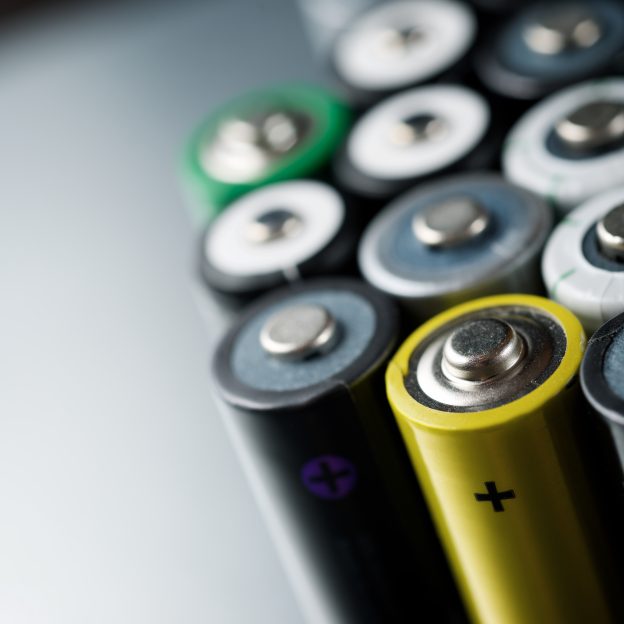The New York Department of Public Service reported on April 1 that since the state initially set energy storage goals in 2018, developers have successfully deployed an energy storage capacity of 396 megawatts (MW) and have additionally awarded or contracted another 581 MW within the state. It is important to note that this figure does not include two pumped-storage hydroelectric facilities that existed prior to the 2018 directive. As of March 31, the cumulative energy storage capacity built so far amounts to approximately 33% of the state's initial target of 3 gigawatts (GW) for the year 2030, and 65% of the state's interim target for 2025. In a significant development towards the end of 2022, New York proposed to double its 2030 target to 6 GW of installed storage capacity. However, despite these advancements, the current storage buildout pales in comparison to the 40.5 GW of proposed energy storage projects that are queued in the state’s interconnection line up. The report highlighted a crucial point, mentioning that an unspecified number of these projects may never materialize due to various challenges such as the high cost of interconnection, permitting complexities, financing issues, or other unforeseen reasons. This underscores the fact that while ambitions are high, actual deployment can be significantly impacted by practical considerations and constraints.
In light of these findings, it becomes evident that although substantial strides have been made towards meeting the state's energy storage objectives, there remains a considerable gap between the planned projections and the actual deployment. The proposed increase in the 2030 target to 6 GW indicates a strong commitment from New York to bolster its energy storage infrastructure. Nonetheless, the road ahead is fraught with potential obstacles that could hinder the full realization of these ambitious targets. It is imperative for stakeholders to address these challenges proactively to ensure that the state's renewable energy goals are achieved efficiently and sustainably.
In its submission to the New York Public Service Commission last year, a consortium of New York utilities expressed that achieving a storage capacity of 6 GW by the year 2030 would necessitate a concerted and all-inclusive approach. Despite the provision of generous state incentives and a recent downturn in storage costs, the latest report from the state indicates that New York is unlikely to meet its interim target for 2025. To reach its 2030 goal, the state would need to exert considerable effort, according to Vanessa Witte, a senior research analyst specializing in energy storage at Wood Mackenzie, in an interview with Utility Dive. Witte mentioned that Wood Mackenzie is currently tracking approximately 2,400 MW of potential projects in New York that could feasibly be constructed in the forthcoming years. However, these projects have not yet received the necessary permits or contracts, indicating a lack of substantial development progress, as added by Witte. The implication is that a significant portion of the announced capacity is unlikely to be operational within the next 18 months.
The sluggish pace of New York's storage expansion can be partly attributed to the unfavorable economics of merchant bulk energy storage when compared to markets such as California or Texas, where developers can enjoy higher profit margins, as stated by Witte. As costs escalated earlier in the decade due to supply chain bottlenecks and increasing material costs, the already slim profit margins for New York's energy storage developers came under financial strain. This made it more challenging for utilities to commit to storage projects and for developers to ensure their projects were financially viable, Witte further commented. The report released by New York on April 1st highlighted that "the still relatively high cost of energy storage resources today, coupled with uncertainties in monetizing its various value streams, has led to an irregular pace of deployment."
To address these cost issues, the New York PSC has approved initiatives, including utility procurements and upfront incentives, as stated by the state. As of March 31st, 675 MW of storage had been awarded, contracted, or deployed through the state's Bridge Incentive program, which offers financial incentives for qualifying bulk energy storage projects exceeding 5 MW, commercial retail energy storage systems no larger than 5 MW, and single-family residential solar-plus-storage systems. These incentives are based on the storage capacity of participating resources and the quantity of energy they contribute to the grid. Among the projects participating in the Bridge Incentive program, the state reported that the 60 tracked retail front-of-the-meter solar-plus-storage systems had an average cost of $463/kWh as of March. The 22 tracked retail storage-only systems had an average cost of $511/kWh, while the seven tracked bulk storage systems averaged $526/kWh. The state also tracked a smaller number of retail behind-the-meter storage-only and solar-plus-storage projects with average costs exceeding $1,000/kWh. However, the report cautioned that with a small sample size, higher installation costs on a single project could rapidly affect the average cost. Due to rising expenses in 2021 and 2022, New York increased its energy storage roadmap cost projections by up to $300 million. Nevertheless, the state's April 1st report noted that price increases had subsided last year, with "lithium-ion battery pack prices dropping 14% to $139/kWh from 2022 to 2023." Looking ahead, the state cited BloombergNEF projections that predict total installed costs for "large turnkey four-hour AC energy storage [systems]" will fall to $175/kWh by 2030. "Now that we are in an environment of reduced costs ... we do anticipate that New York will progress more rapidly" in adding storage capacity, with state financial incentives bolstering the positive momentum, Witte said.
"When I converse with developers in New York, the general sentiment is that [the state] will achieve the overall storage targets," but perhaps not within the self-imposed deadlines, Witte remarked. While "there are numerous dependencies" that could influence the buildout over the next decade, including an interconnection queue that can extend the typical bulk storage project's timeline by two to six years, the state is on track to reach 6 GW by 2032 or 2033, she added. Smaller-scale distributed storage resources, including residential solar-and-storage systems, could help compensate for any shortfalls in the short term, suggested Hanna Nuttall, a U.S. distributed storage analyst at Wood Mackenzie, in an interview with Utility Dive. "Developers are increasingly focusing on distributed [storage] given the challenges with grid-scale," Nuttall said. "It's not to say that interconnection for distributed is simple, but it's certainly not as costly as on the utility side."







